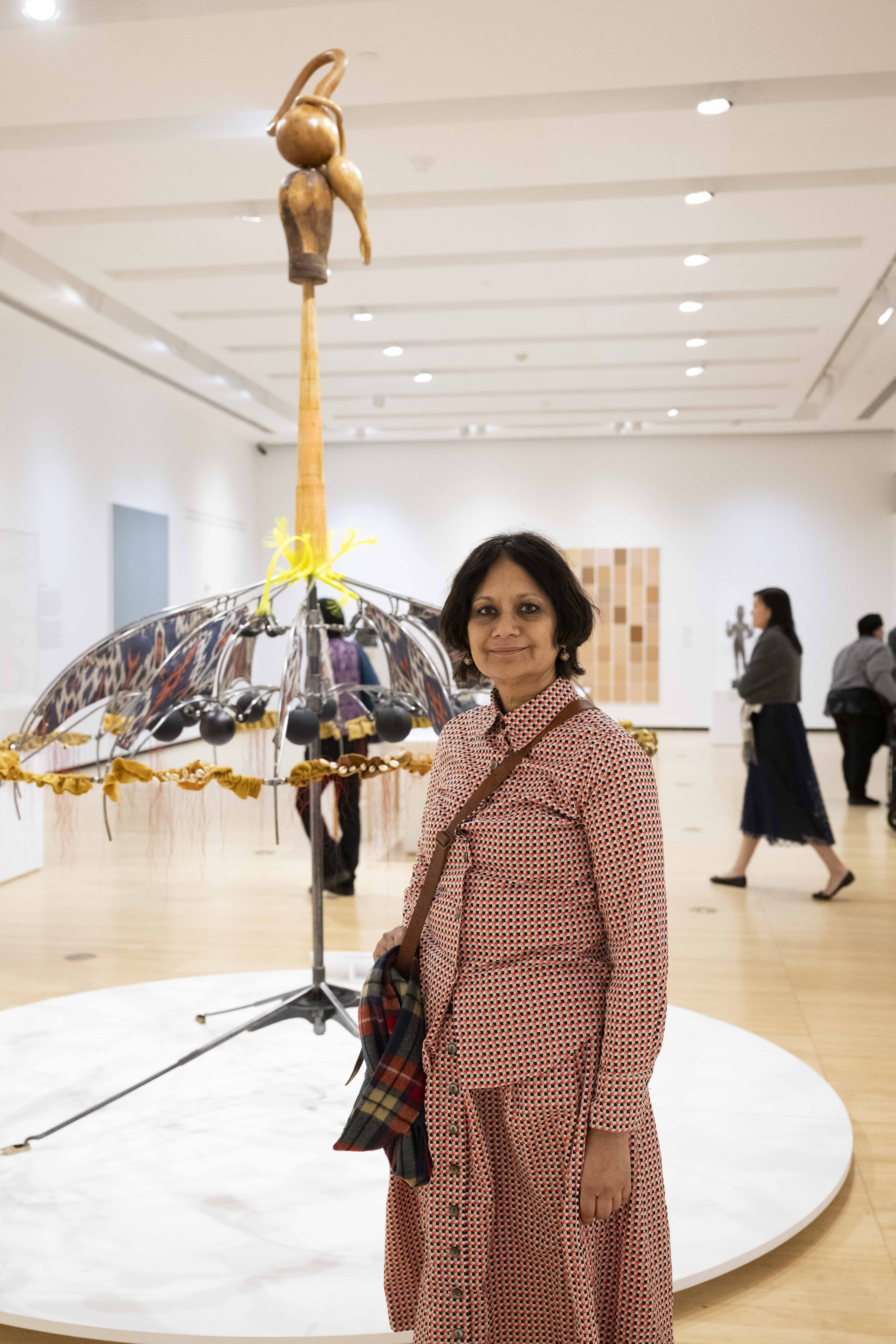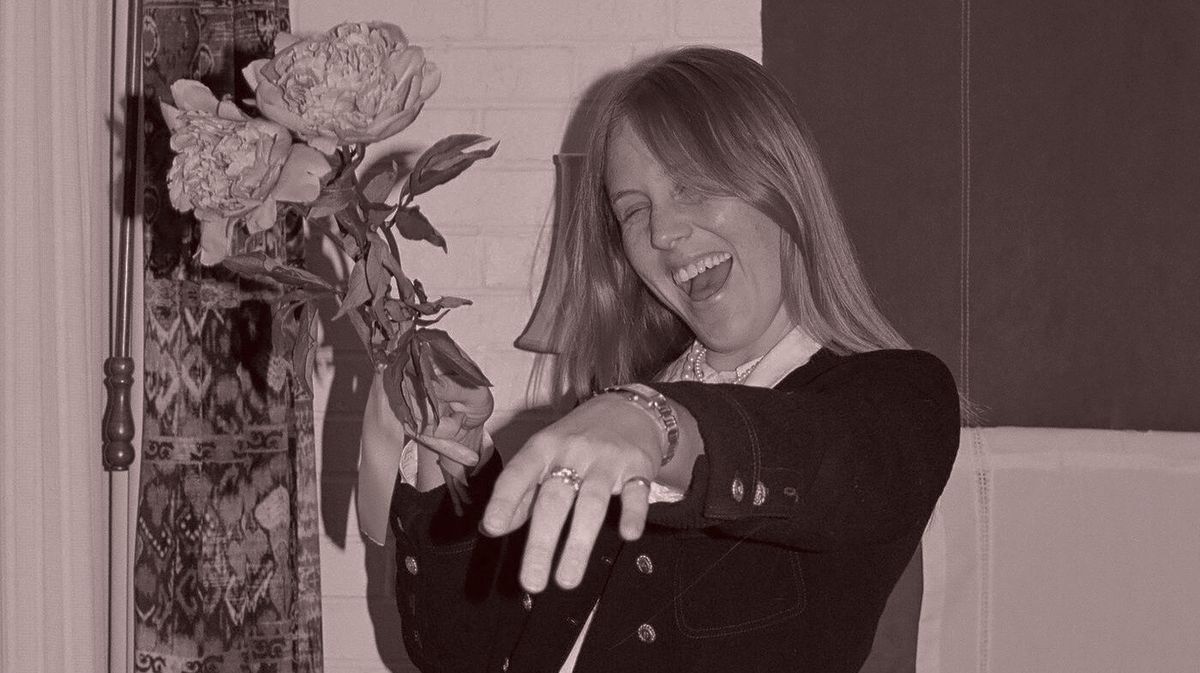Welcome back to Wall Power. I’m Marion Maneker and
I hope you’re not too groggy from the switch to Daylight Saving Time.
We’re going to take a spin through the world of watches tonight as Julie Davich meets Brynn Wallner, the journalist behind the Dimepiece Instagram account. The watch world has always had
lots of masculine energy—the fixation on reference numbers and historical production mimics the stodgy and cigar fume–inflected world of car collecting. As Julie discovers, Wallner has been having an impact on watchmakers, who now look to her for new models that might appeal to women. Julie also has some updates throughout the collecting world. I’ll be back at the end with some notes.
I’ll let Julie get
started…
|
|
|

|
Julie Brener Davich
|
|
- “Kitsch from the
rich” in Columbia County: Yesterday, I adventured up to Stair Galleries in Hudson, New York, to beat the late winter malaise. Colin Stair, his daughter, Holly, and their black lab, Kate, were standing near the doorway greeting clients. Most people popping in were local regulars—a magazine editor, jewelry designer, and rug dealer—and, by fun coincidence, Dennis Harrington, head of European furniture at Sotheby’s, whom I’d interviewed for my recent story on the Aso O. Tavitian collection.
|
The gardens at Aso O. Tavitian’s Berkshires home. Photo: Courtesy of Stair
Galleries
|
- Next week, Stair is selling 800 of the more moderately priced items from the Tavitian collection that Sotheby’s did not include in its blockbuster sale. Dennis and I were both there to see the preview exhibition. The offerings, estimated between $50 and $5,000, include European works of art, 18th and 19th century furniture, and an exceptional collection of garden statuary from Tavitian’s country home in the Berkshires. (Hudson is a stone’s throw from the twin-city heart of the bucolic
weekender region, Lenox and Great Barrington.) “There’s a lot of must-haves here,” I overheard one gallerygoer say.
Colin Stair is a fourth-generation furniture specialist. Like his father, he worked at Sotheby’s, where he was a furniture restorer. That’s how he met his wife, Katrina, a painting restorer. He left Sotheby’s in 2001 amid the infamous price-fixing scandal to open his own auction house, which has grown into a staff of 32 putting on about 35 auctions per year.
As is the case with the Tavitian sale, Stair frequently partners with the larger auction houses to offer the more moderately valued items from big collections. Christie’s and Sotheby’s no longer provide the same level of “broom sweep” service for estate sales that they once did, and regional houses have swooped in to fill the void. Unlike the larger houses, Stair still puts on exhibitions and live auctions, and drafts catalogue essays, for even the lowest-value items. Colin sees his main
competitors as Doyle, Millea Brothers, Nye & Company, and sometimes Bonhams.
The Tavitian collection perfectly fits Stair’s ethos of “interesting things from interesting people.” There are many items that are mechanical in nature, from compasses to clocks to corkscrews, even a rosewood flower press. Many of the objects that are decorative to us now were utilitarian in previous centuries, like boot scrapers, an embroidery stand, and octagonal buckets for transporting plates. Tavitian
collected in-depth, and there are several miniature portfolios within the collection, like sinumbra lamps, chimney pieces, and decanters—or, as Colin quips, “kitsch from the rich.”
|
- (Re)Generations at Asia Society: Last week, I also stopped by the Asia Society to preview the exhibition (Re)Generations, featuring works by Rina Banerjee, Byron Kim, and Howardena Pindell, where I was lucky enough to run into Banerjee herself. The three contemporary artists were asked by the curators to select works from the collection of Asia Society founders Blanchette and John D.
Rockefeller III, and to create dialogues between these and their own works, to help make the ancient works accessible to a wider audience.
|
Photo: Courtesy of Asia Society Museum
|
- Banerjee is an Indian American painter and sculptor who transforms collected objects into otherworldly sculptures. When presented with the Asia Society’s collection, she was drawn to ancient Chinese, Indian, and Japanese figures in stone and bronze, especially decayed ones with missing extremities. “It made the presentation of the collection look like a hospital,” she told me. Inspired by a 6th-7th century Japanese terracotta warrior wearing a skirt, she created two sculptures with a similar
silhouette from collected objects like gourds, a 19th century gramophone, and a wood milliner’s head.
Kim, a Korean American painter, was inspired by an 11th-12th century Korean stoneware bottle to extend his ongoing series of celadon paintings. Pindell, a pioneering African American abstractionist, took transformative trips to India and Japan in the 1970s and 1980s, which led to her Autobiography series of collaged postcards. Pieces from that body of work are on view alongside
17th century Indian manuscripts and Japanese screens.
I’m embarrassed to admit that this marked my first trip to the Asia Society in the 20-plus years I’ve lived in Manhattan, so it seems the show’s goal of attracting a new audience to the category is already successful. If you, too, are an Asian art novice, this show is a great place to start. (Re)Generations is on view through August.
|
|
|
The women’s watch journalist behind Dimepiece is changing the stuffy collecting
community—what women wear and how they wear it—while helping to reshape the industry, itself.
|
|
|
Brynn Wallner, better known as
@dimepiece, has some 56,000 Instagram followers who devour her female-forward watch content. (“Dimepiece” rhymes with “timepiece,” but “dime” is also slang for an attractive woman, as in a 10… you get it. Alas, she says she would pick a different handle if given a second chance.) On Wallner’s IG account, there are photos of celebrities wearing watches, selfies of her own watch-adorned
wrist, snapshots from her life, and memes (e.g., “You keep me wanting more … No, seriously. Buy me a Cartier Baignoire.”) On her website, also called Dimepiece, she interviews women about their watch collections and/or first watches (“First Dimers”) and posts educational content—the kind of information that Wallner herself was looking for when she first became interested in the category.
Wallner jumped into the fast-growing market at a time when Hodinkee, the watch enthusiast
website, had already inserted the collecting community into the mainstream consciousness, turned the hobby into a cult obsession, and pushed up prices in the secondary market. Today, women are a fast-growing sector among luxury watch buyers and wearers, thanks in part to more gender-neutral designs, female-focused marketing, and influencers like Wallner. “She makes watches more approachable when they were otherwise always a niche and stuffy luxury,” said Zoë Abelson
(@watchgirloffduty), a luxury dealer and founder of Graal, who first connected with Wallner in the early days of Dimepiece. “Her opinion has had effects on all aspects of the watch world—on the perspectives of consumers and collectors, on brands listening to what people want to
wear, and on secondary-market trends.”
Watchmakers have had to play catch-up as Wallner builds and shapes the next generation of female watch buyers. She is, among other things, credited with contributing to the revolution in small watches. “She was the first person to start posting about smaller watches being ‘cool,’” Abelson told me, “and not long after, brands were coming out with their classic models in smaller case sizes, and we saw an uptick in interest for smaller watches on the
secondary market.”
|
Royal Oak Minis. Photo: Courtesy of Audemars Piguet
|
Last spring, Audemars Piguet launched a smaller version of its Royal Oak, officially called the
“Royal Oak Mini,” but Wallner dubbed it the TTRO (Teeny Tiny Royal Oak), an acronym that stuck. (Olympic legend Simone Biles DMed Wallner to ask where she could get one.) In 2023, Cartier reissued its Baignoire, but on a gold bangle. “It’s designed to be stacked,” Wallner told me. It’s an ironic evolution from just a couple years ago, when Meghan Markle got flak from the watch community for stacking bracelets with Princess Diana’s gold Cartier
Tank Française, since this can ding and scratch the watch.
The Baignoire bangle was the “first time a watch was released for women and got the waitlist treatment,” Wallner told me. Bulgari is also committing to women’s watches, specifically mechanical ones. In 2022, the brand released the Serpenti Misteriosi secret watches, powered by the BVL 100 Piccolissimo—the smallest mechanical movement of the 21st century at just 12.3mm in diameter and 2.5mm thick.
|
Wallner grew up in Hoboken and attended private school in downtown Manhattan, then Colgate
University, followed by a career in the salt mines of content creation. Her journey to Dimepiece began in 2019, when she was working in marketing at Sotheby’s, creating editorial content for the watches team, and perceived a lack of watch marketing directed toward women. “Women weren’t central to the narrative at all,” she told me. She became interested in timepieces and began learning about them—the different brands, product families, movements, reference numbers, that sort of thing. When
Sotheby’s laid her off at the start of the pandemic, she was able to focus on her new interest without distraction.
The timing was fortuitous. As we know, online watch sales exploded during the pandemic, along with other collectibles markets. It was also a time when companies were being held accountable for not being inclusive. “I’m by no means the first female watch journalist,” she told me, and referenced Roberta Naas, who got her start in the 1980s. “But in 2020, I
could post in a frankly girly way without anybody coming after me.”
Wallner launched her Instagram in fall 2020, and her website soon after. A big moment for women in the watch industry came in February 2021, when Hodinkee’s Cara Barrett published an article calling for watches to be unisex—this was a time when cool women favored wearing masculine styles loosely on their wrists, rather than smaller women’s watches. The year before, both Patek Philippe and Hublot had
launched styles that were intended to be gender-neutral; Barrett’s article brought awareness to the concept, and made it a talking point in the industry. But it’s not as simple as rebranding: “I’ve had marketing people hand me a watch and say, It could be a woman’s watch, when it totally could not be,” said Wallner.
Harper’s Bazaar invited Wallner to write a recurring column on collecting timepieces—a men’s magazine staple in a historic female glossy. Her first piece, in
June 2021, was titled, “In Defense of Small Watches.” Brands soon started reaching out to her. The first was Audemars Piguet, which is a “very progressive brand by nature,” Wallner told me. They have prioritized putting women in executive roles, starting with Ginny Wright as C.E.O. of the Americas in 2021, then Ilaria Resta as C.E.O. a couple years later.
|
Most of the luxury watch brands you’ve heard of—Patek Philippe, Cartier, IWC, Jaeger-LeCoultre,
Audemars Piguet, etcetera—were founded in the 19th century, when the industry almost exclusively made pocket watches for men. Women didn’t even have pockets back then. At the time, the mechanical movements that kept accurate time were too large to fit into anything smaller than a pocket watch. Rolex invented the wristwatch as we know it in 1910; it became standard issue for enlisted men during World War I. Women didn’t really start wearing wristwatches until the 1930s, after Jaeger-LeCoultre
created the Calibre 101, the world’s smallest mechanical movement at just 14mm long by 4.8mm wide by 3.4mm thick.
Watches for women are still dictated by size. A “lady’s watch” is defined as any watch smaller than 34 millimeters—usually built around a battery-powered quartz movement instead of the mechanical complications that make men’s watches rare and collectible, and featuring stereotypically “feminine” design details like mother-of-pearl. These collections of “ladies’ watches” are
omnipresent but outdated, not only in design but also messaging. It’s no wonder that when Wallner started researching watches in 2019, she found “nothing for someone like me, young and into fashion.” Now, with her influence, Wallner is pushing for more intentionality in the design rooms. Bulgari is committed to making mechanical watches for women, and has released additional styles containing its proprietary Piccolissimo movement. Tiffany is releasing more—and more fantastical—creations, like
its “Bird on a Flying Tourbillon” watch, which is in line with parent company LVMH’s growing focus on horology.
Female consumers are taking notice. They’re not yet collectors in the same way some male watch enthusiasts are—they’re more one or two and done, said Wallner—but with prices skyrocketing for other luxury items like handbags, they’re looking to watches, which have more longevity. Wallner pointed out that vintage ladies’ watches are also getting more popular. “I’m sure in April at
the Watches and Wonders trade show in Geneva, there will be some femme-forward releases—smaller sizes, more gems maybe,” she said, “The watch world is really trying.”
|
I got a kick out of my friend Jac Urist’s Financial Times
profile of Mary Rozell’s Brooklyn town house. Mary is a well-known presence in the art world, recognizable for both her striking shock of white hair and the clout she wields as the global head of UBS’s 45,000-work art collection. The roots of the Swiss bank’s collection lie in the postwar holdings of Paine Webber, the investment firm run by the
legendary collector Don Marron, which merged with UBS a quarter-century ago. (Paine Webber also donated a few dozen works to MoMA, where Marron served as president of the museum’s board.) Under Rozell, UBS shifted its art acquisition strategy toward the primary market and supporting a disparate range of artists around the world, whom it features in the bank’s many offices and in sponsored exhibitions.
What does a woman who manages such a vast art collection buy for her
own home? The answer will likely surprise you. “I know the feelings I want to create. I want each room to feel different, but I want there to be a thread, a connection,” Rozell tells Urist, adding that she likes simple basics. “I just don’t like fancy things.”
Also, in case you missed it, Ricardo Scofidio died last week. The theoretical architect and professor at Cooper Union, who had great success as a builder of museums like the ICA Boston and The Broad in Los Angeles,
was also intimately involved in public institutions like New York’s astoundingly successful and influential High Line urban park. He was 89 years old.
Speaking of architects, this year’s Pritzker Prize was awarded to
Liu Jiakun, only the second Chinese architect to receive the honor, whose office is in Chengdu. The award cites his ability to create “public areas in populated cities where the luxury of space is largely absent, forging a positive relationship between density and open space.” The prize also praises Liu’s ability to reconcile “antipodes such as utopia versus everyday existence, history versus modernity, and collectivism versus individuality.”
With that, I’ll say goodbye
for now,
M
|
|
|
Puck founding partner Matt Belloni takes you inside the business of Hollywood, using exclusive reporting and
insight to explain the backstories on everything from Marvel movies to the streaming wars.
|
|
|
The ultimate fashion industry bible, offering incisive reportage on all aspects of the business and its biggest
players. Anchored by preeminent fashion journalist Lauren Sherman, Line Sheet also features veteran reporter Rachel Strugatz, who delivers unparalleled intel on what’s happening in the beauty industry, and Sarah Shapiro, a longtime retail strategist who writes about e-commerce, brick-and-mortar, D.T.C., and more.
|
|
|
Need help? Review our FAQ page or contact us for assistance. For brand partnerships, email ads@puck.news.
You received this email because you signed up to receive emails from Puck, or as part of your Puck account associated with . To stop receiving this newsletter and/or manage all your email preferences, click here.
|
Puck is published by Heat Media LLC. 107 Greenwich St, New York, NY
10006
|
|
|
|















